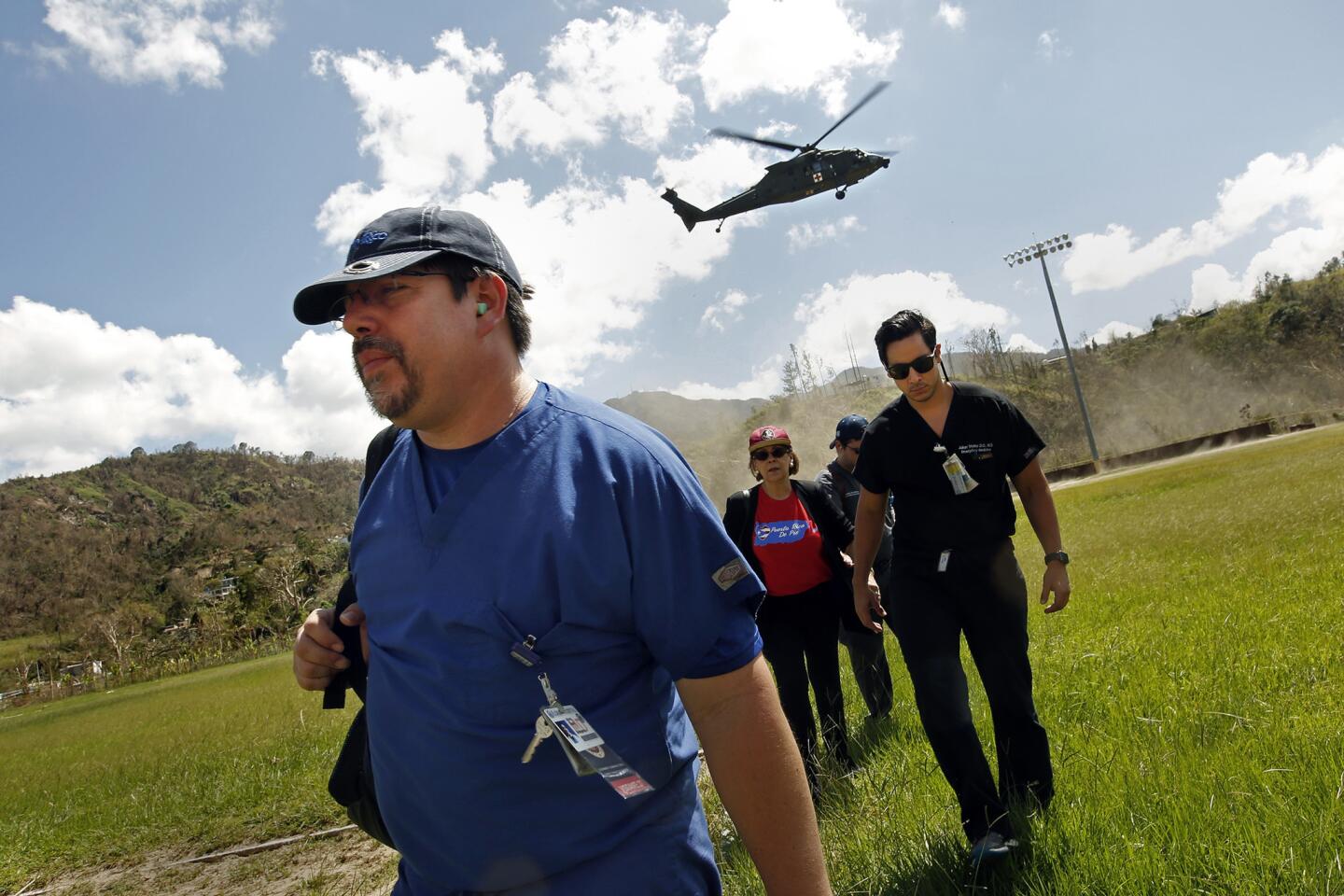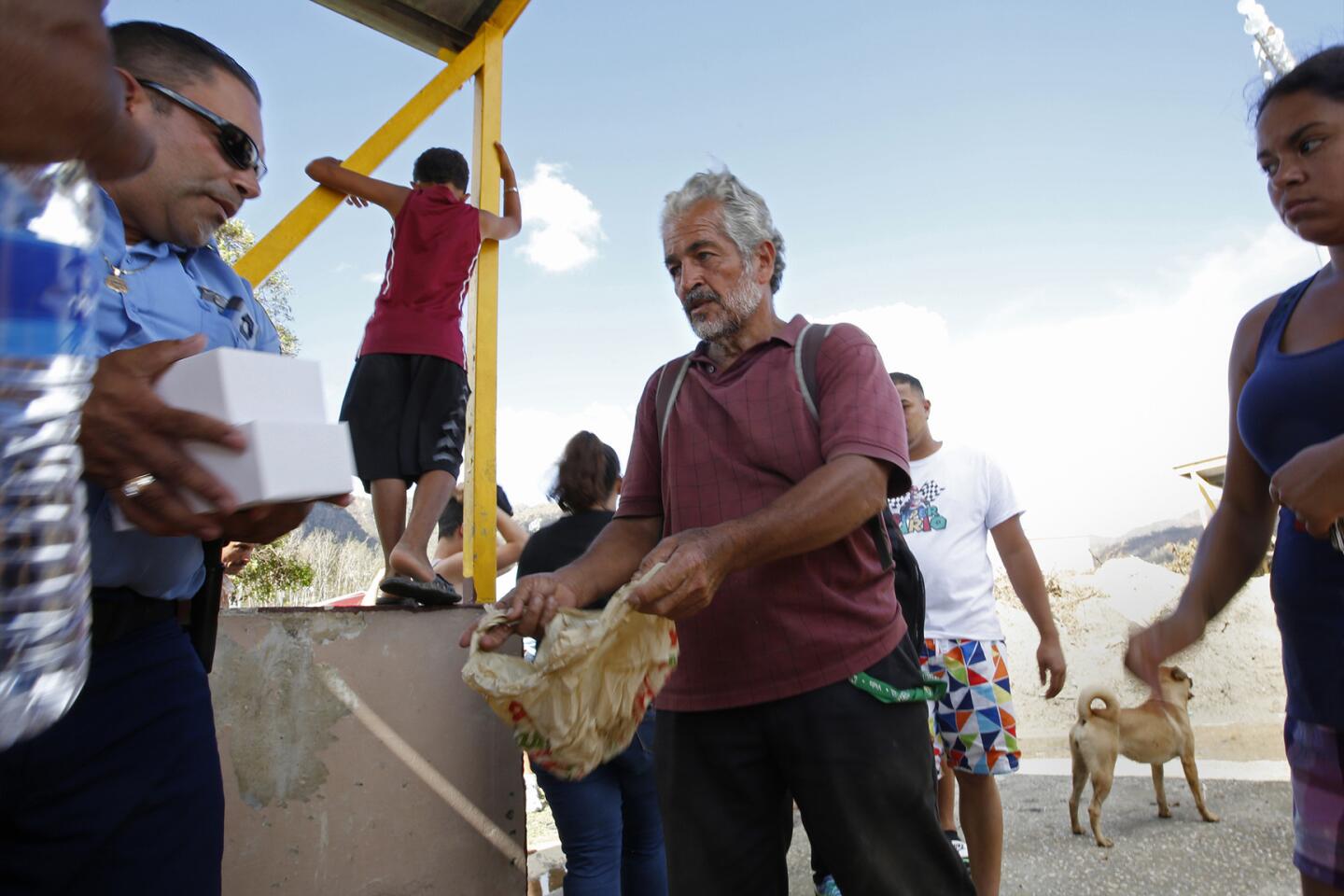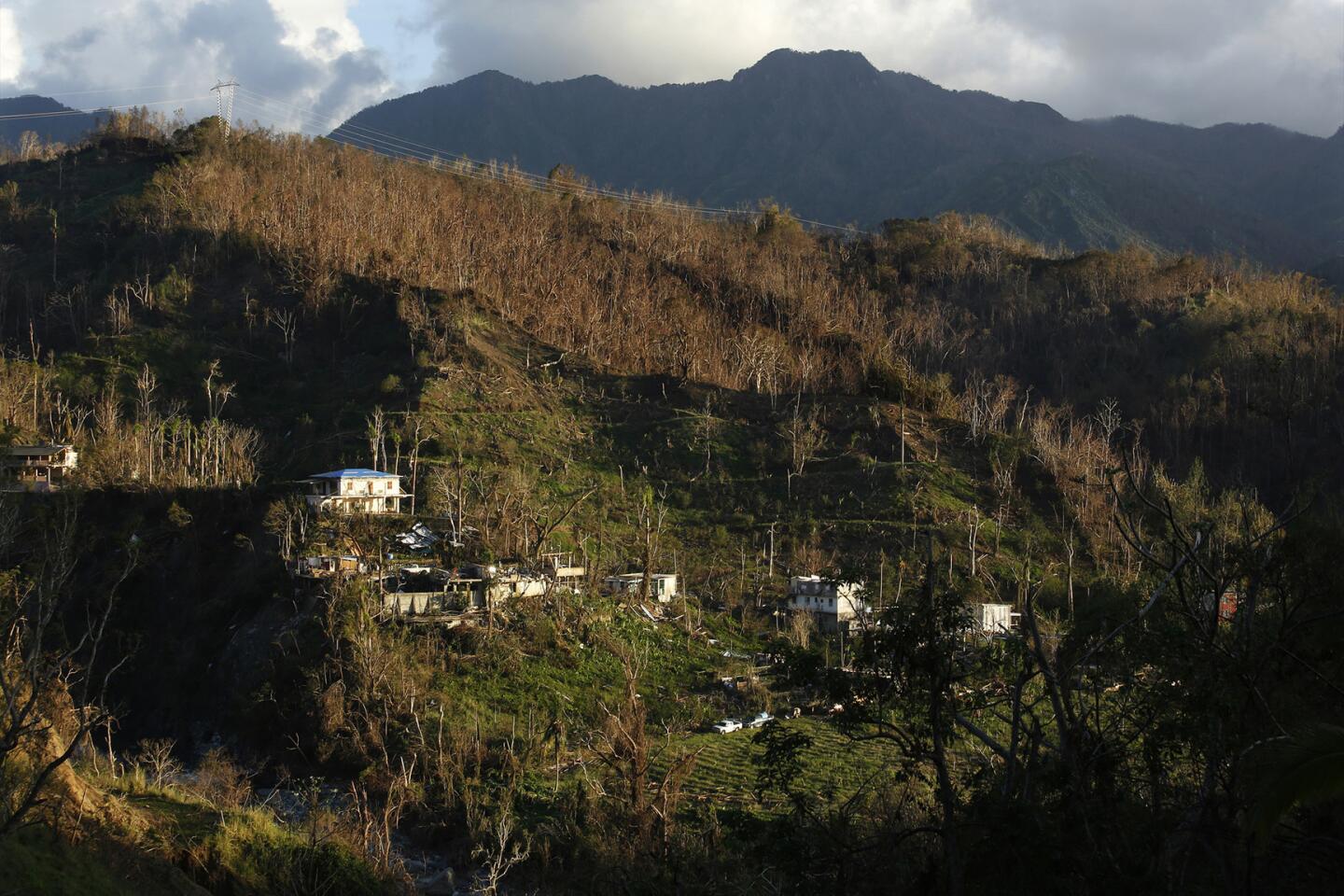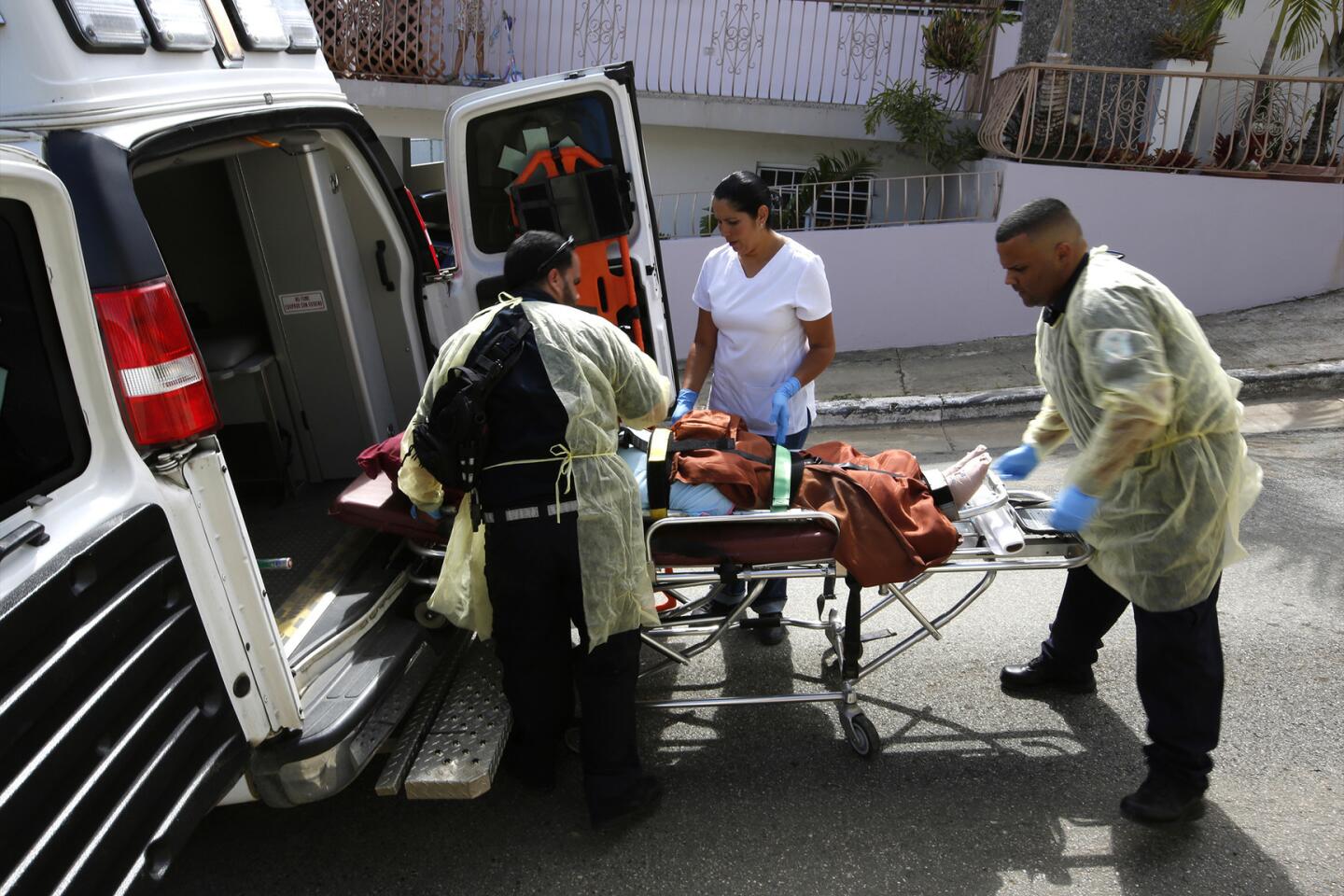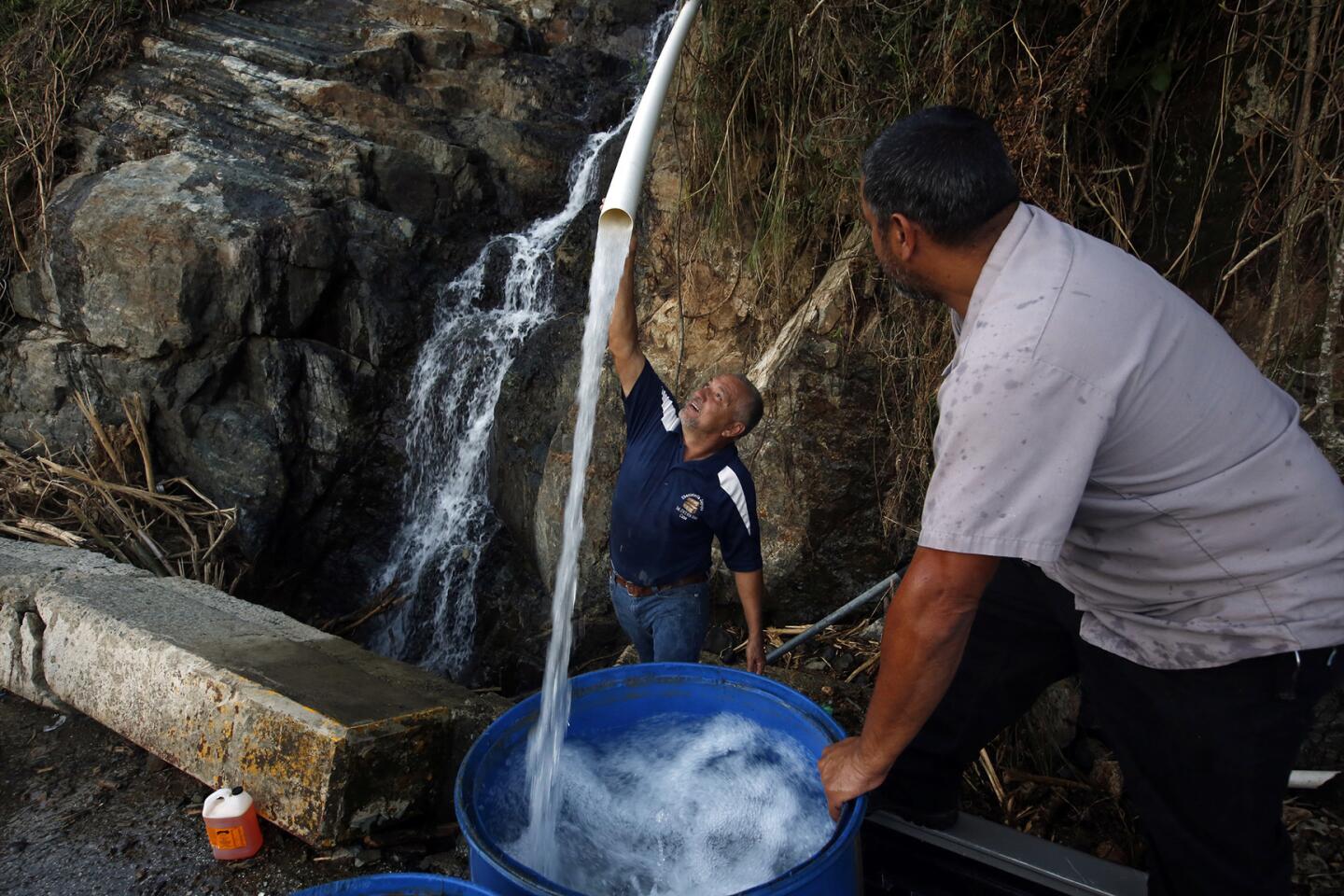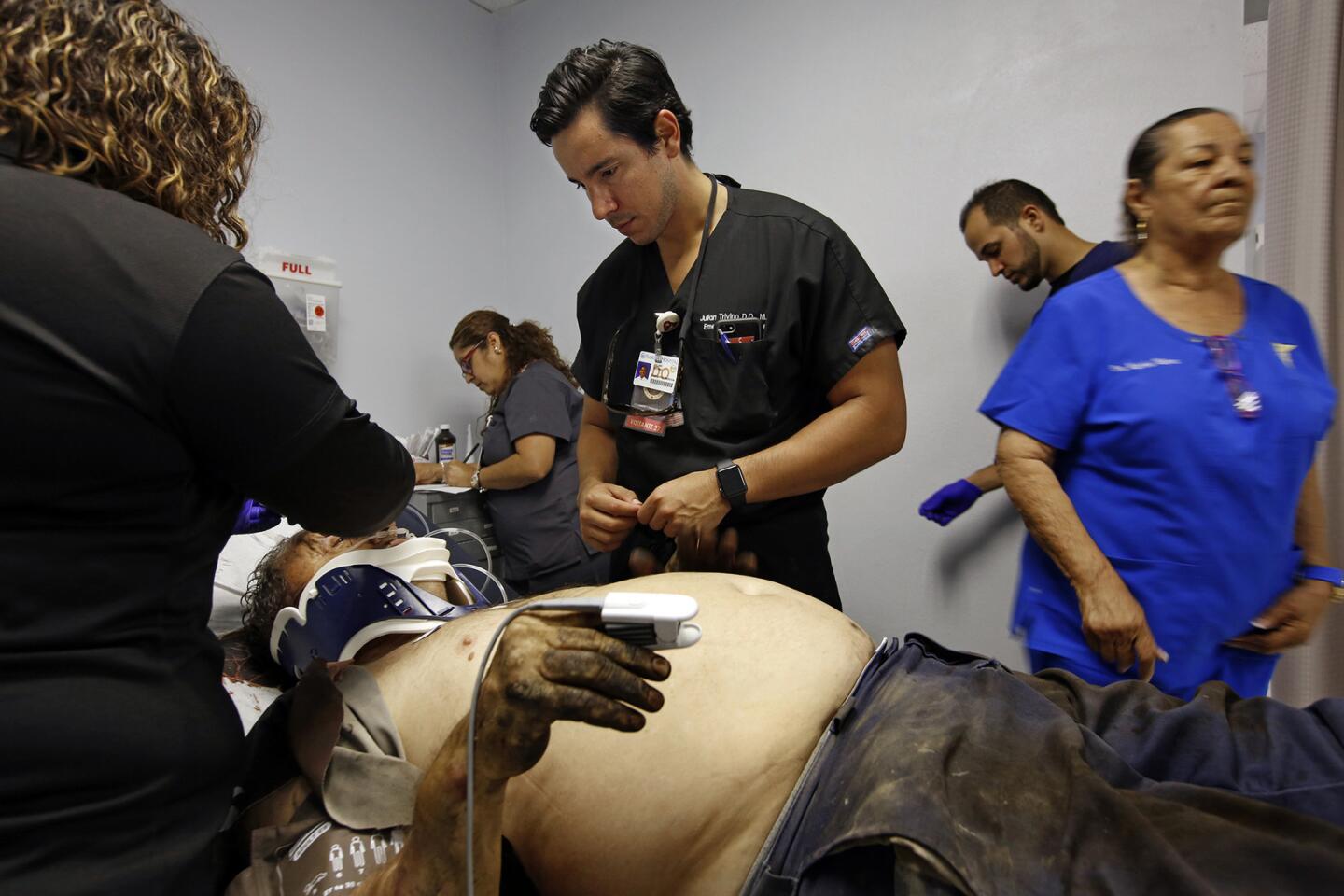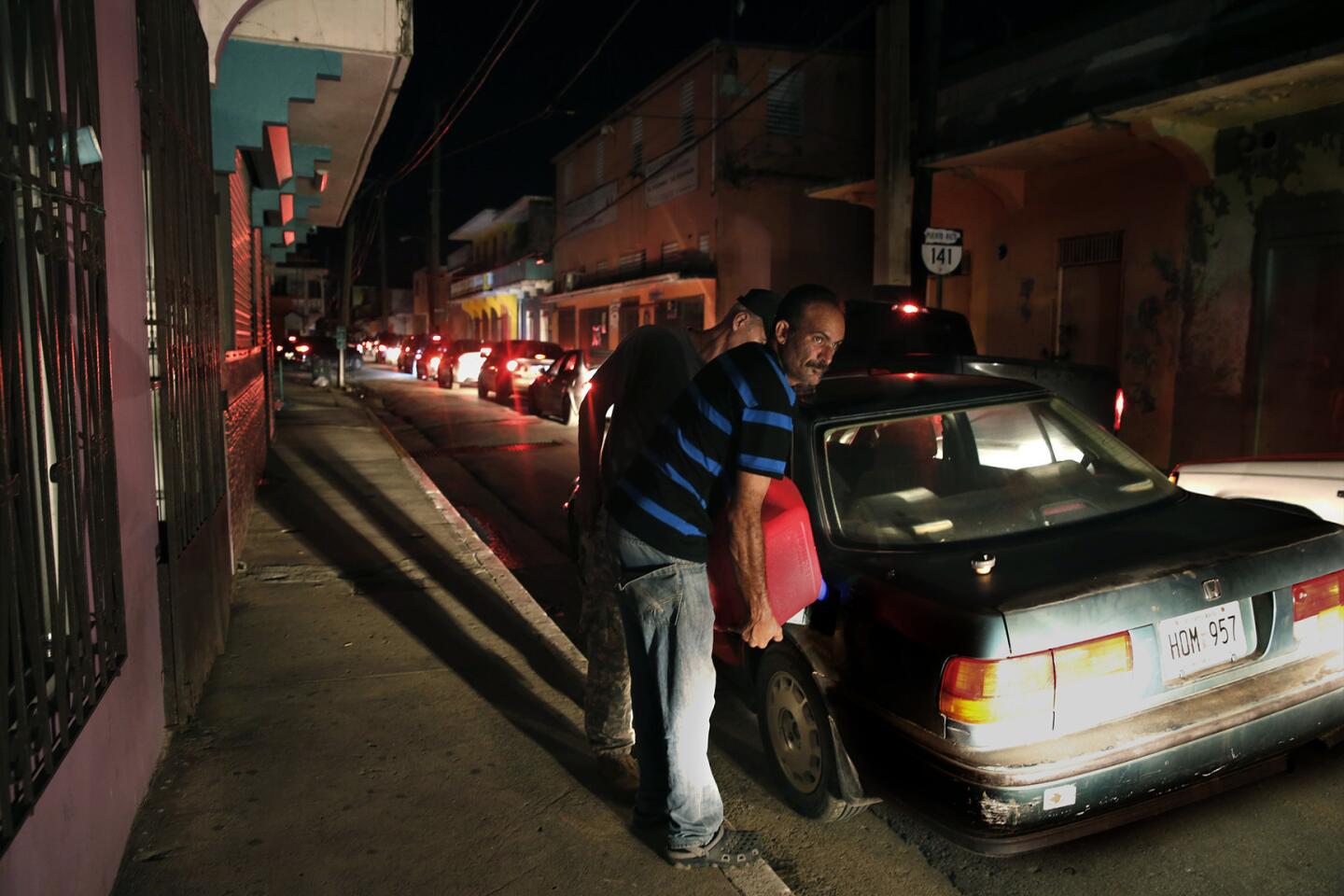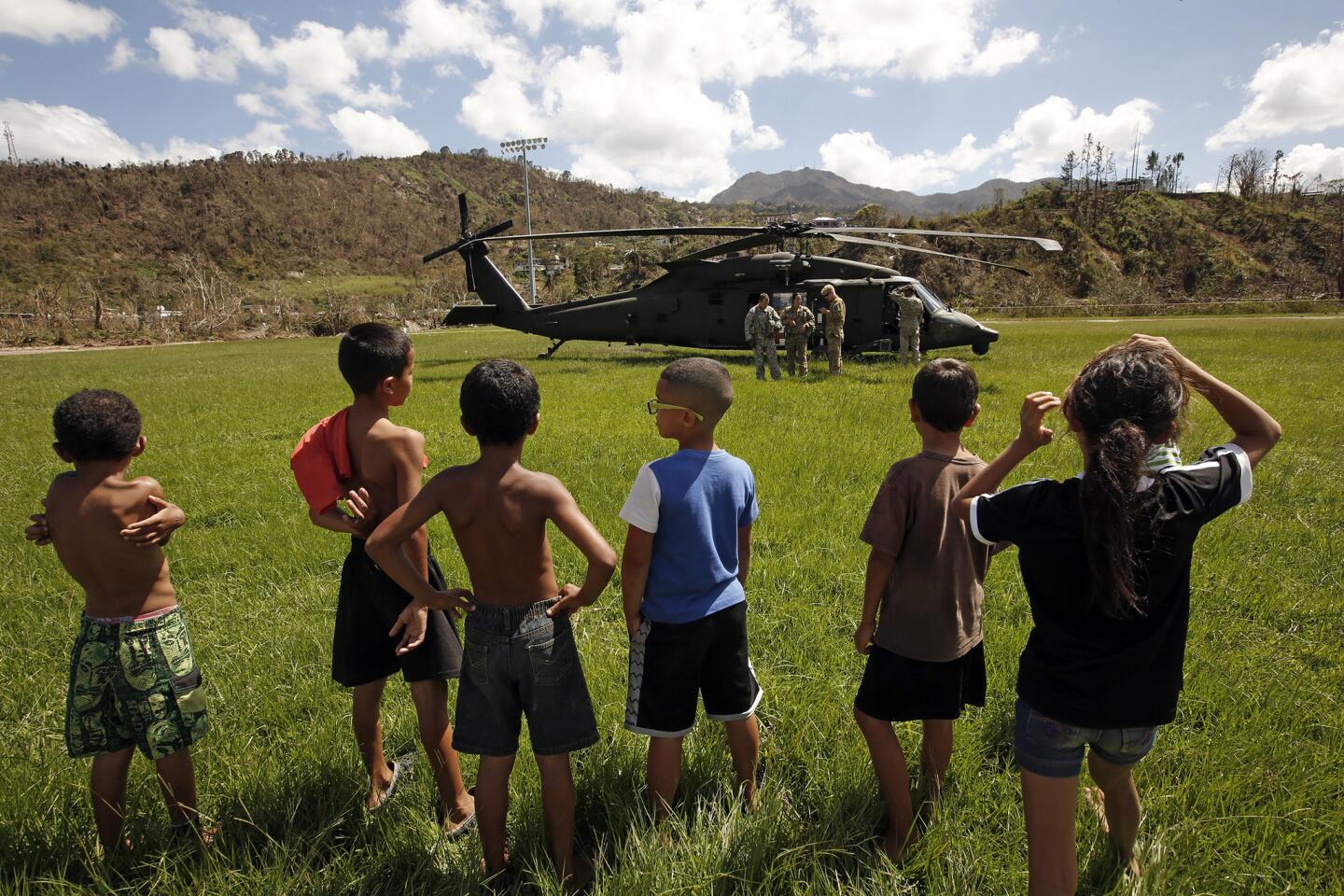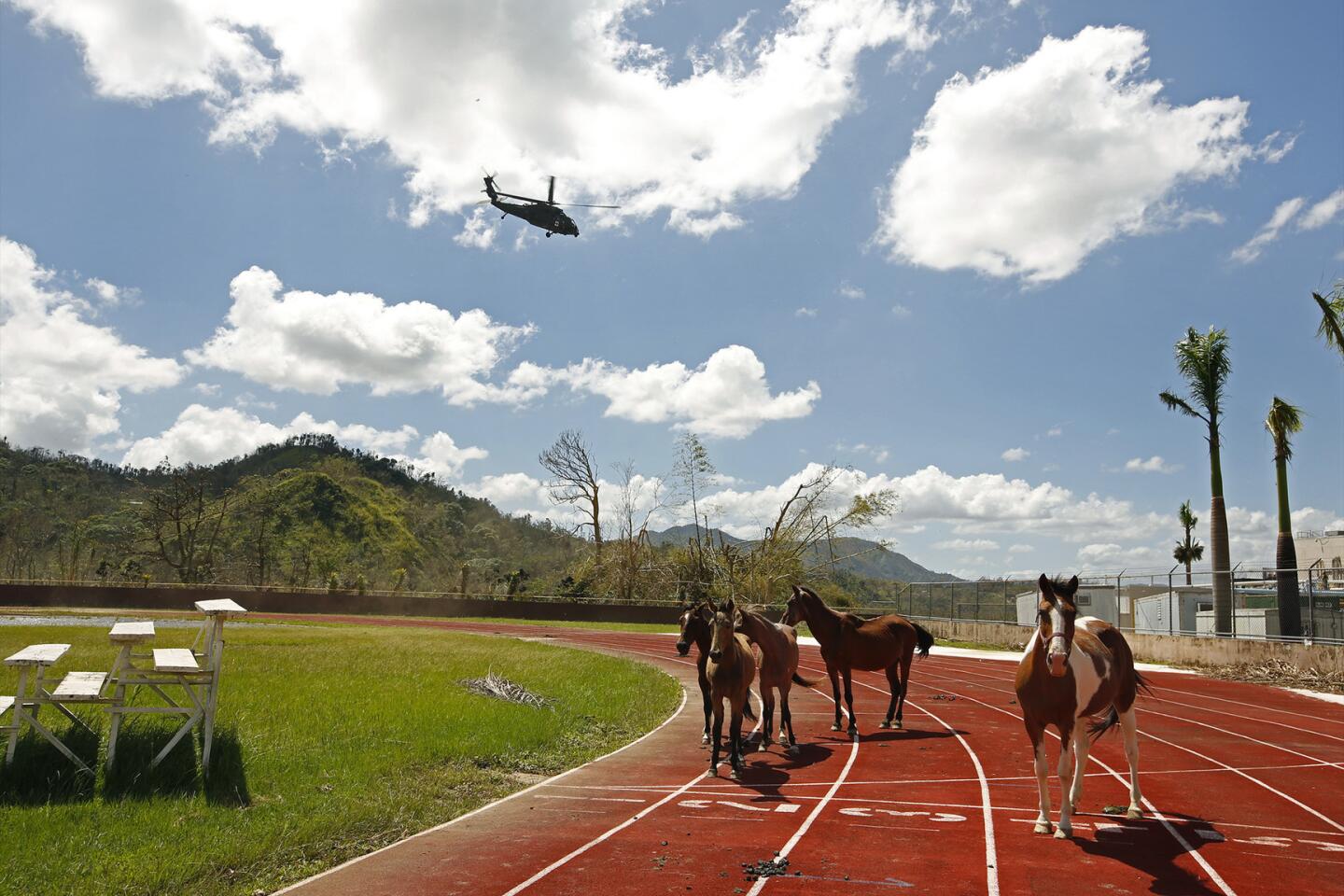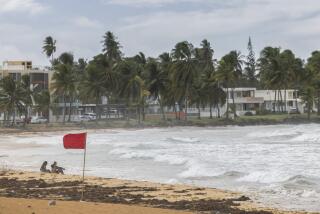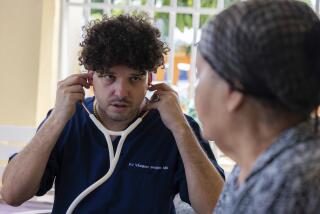She was covered in insects and unable to walk: Doctors in Puerto Rico only now discovering the problems in remote towns

Two weeks after Hurricane Maria struck Puerto Rico, hospitals are still relying on generators and are now running out of vital medications.
Reporting from JAYUYA, Puerto Rico — After Hurricane Maria’s landslides and flooding further isolated this mountain town, a volunteer doctor rushed to treat diabetic Brunilda Sovilaro, found on the floor of her home, covered in insects, unable to walk, disoriented and refusing to leave.
“You are sick. You are very hot,” Dr. Jorge Lopez of Orlando, Fla., told the 50-year-old woman. “Your sugar needs to be controlled. You have chest pain. It could be a problem with your heart. You need to go to the hospital.”
Eventually the doctor, a Puerto Rico native who returned to the island from Florida to volunteer, persuaded Sovilaro to board an ambulance to the nearby hospital.
“That lady was going to die if left there like that,” said Lopez, who also volunteered after Hurricane Katrina in Gulfport, Miss., where he said the landscape was much less of a challenge.
Two weeks after Maria struck Puerto Rico, hospitals are still struggling, and many like the one in Jayuya are without electricity and communications, reliant on generators and running short of vital medications. As of Friday, 8,349 displaced persons were still in 132 shelters. Officials worry about public health risks due to the frayed medical safety net on the island of 3.5 million, and are trying to address hospitals’ problems before they grow.
Several Democrats in Congress spoke out this week in Washington, calling on the Federal Emergency Management Agency to supply transportation to bring the ill, elderly and frail to the mainland.
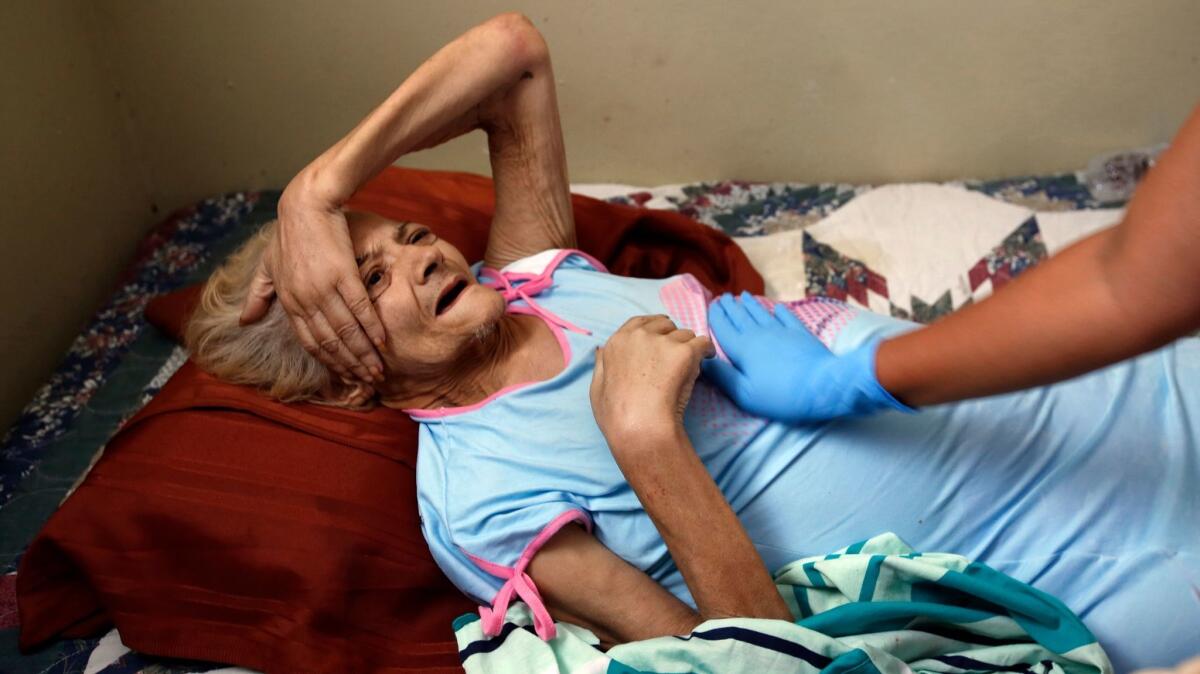
“The reality of Puerto Rico doesn’t allow for these vulnerable people, sick people, to stay in Puerto Rico and get the treatment that they need,” said U.S. Rep. Nydia M. Velazquez (D-N.Y.), calling the situation a “humanitarian crisis.”
U.S. Rep. Luis V. Gutierrez (D-Ill.), who traveled to the island last week, said that when President Trump visited Tuesday, he never made it to the mountains.
“The rain sent the mountains down upon the people through the rivers and washed away towns. There are no bridges, there are no roads. We should simply ask: ‘Bring us your most infirm and sick,’” he said.
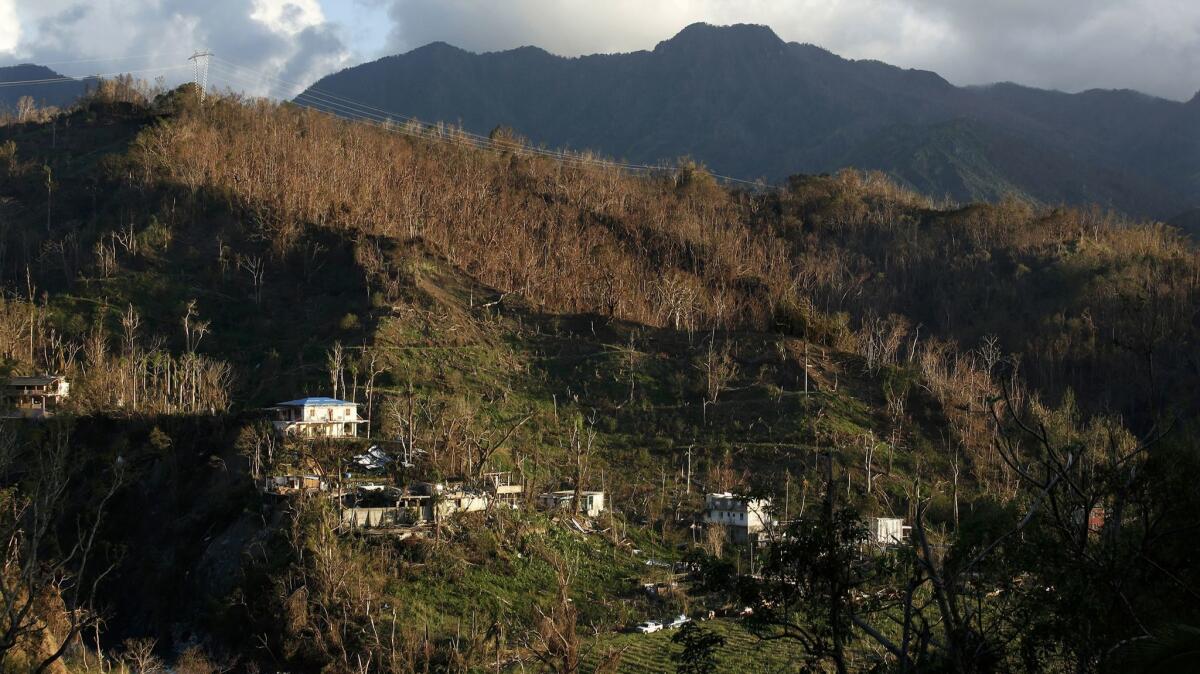
Vice President Mike Pence visited Puerto Rico and the U.S. Virgin Islands on Friday, including Santa Bernardita church in the Puerto Rican capital of San Juan, which has been feeding 60 to 100 people a day since the storm.
“We will be with you every step of the way,” Pence told the crowd. “We have been making steady progress.”
Puerto Rico Gov. Ricardo Rossello said this week that shoring up hospitals in mountain towns like Jayuya is a priority because they “present potential future challenges, public health emergencies.”
Rossello noted that the death toll from the hurricane had risen to 34, including 15 deaths caused indirectly after the storm. Local officials have said people died after the storm due to a lack of oxygen tanks, electricity to fuel life support and other health problems.
Rossello said officials were also concerned about disease outbreaks following the storm, and have already seen some that were “localized,” including several cases of conjunctivitis at a shelter in the southern city of Ponce. Rossello said federal medical disaster management teams had been mobilized in Ponce “so we can control it,” and that the Centers for Disease Control and Prevention sent staff to check for the spread of mosquito-borne illnesses.
Rossello said his goal in shoring up hospitals ahead of outbreaks was “for us to be able to anticipate rather than just react.”
He said Friday that 25 of 68 hospitals had power, and more were expected to be connected soon. The government supplied fuel to 11 hospitals and more was being delivered Friday, he said.
Rossello listed Jayuya among the 15 most isolated municipalities in Puerto Rico as of Friday, and assigned a fuel truck to deliver 4,000 to 6,000 gallons to each of the communities for free. He said the government was setting up 250-bed “medical super shelters” to relieve the strain on hospitals. Three have opened in San Juan, to the west in Manati and Bayamon, and others were planned on the west coast in Mayaguez, to the south in Ponce and to the east in Humacao.
In the last two weeks, volunteer doctors and other officials have visited incommunicado communities in Añasco, Ciales, Comerío, Juana Díaz, Las Marías, Maricao, San Lorenzo and Yauco, officials said Friday. Some sites were so inaccessible, a helicopter had to land on the roof of a two-story house, according to the governor’s chief of staff, William Villafañe, who visited the sites. “We provided them with necessary medicines. We’re saving lives,” he said.
Eight medical disaster management assistance teams from the mainland were helping hospitals in San Juan, Arecibo, Caguas, Fajardo, Humacao and Ponce, he said.
The 250-bed military hospital ship Comfort arrived in Puerto Rico this week and was still in San Juan on Friday. It can treat up to 1,000 patients and was expected to move to Ceiba, Ponce and Aguadilla.
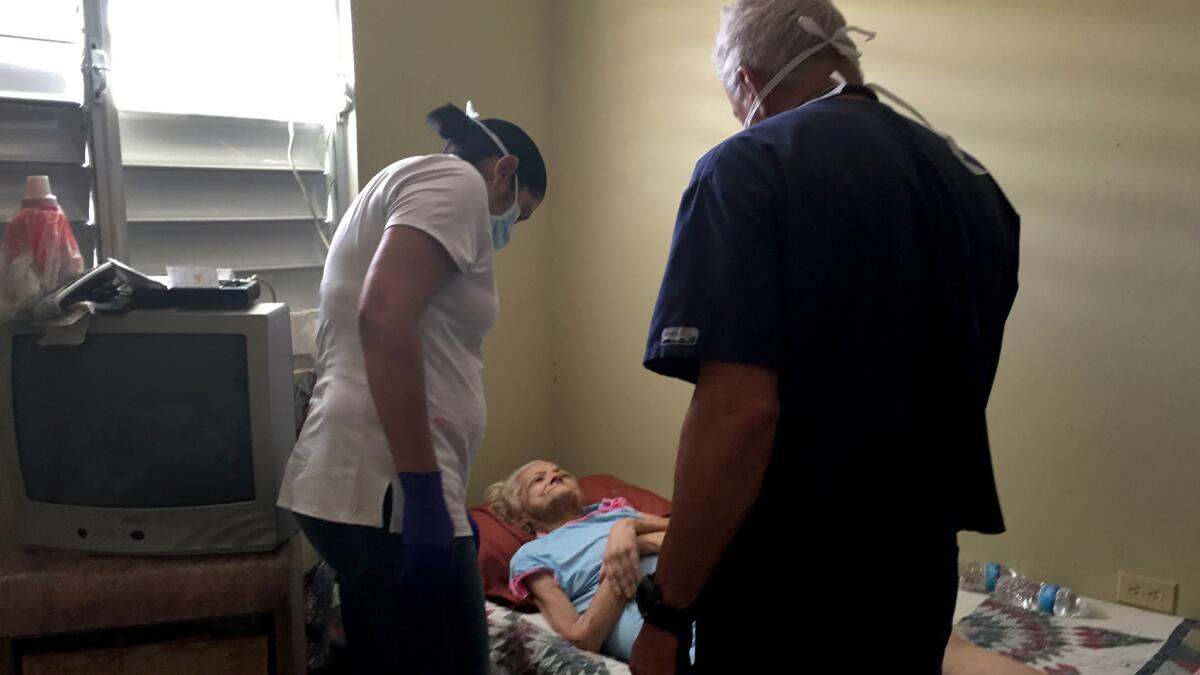
But that wouldn’t help those stranded in Jayuya.
Driving back to the Jayuya hospital on an all-terrain vehicle Wednesday, Dr. Lopez surveyed the town. He worried how the small hospital would cope with possible outbreaks in coming weeks, especially tropical mosquito-borne illnesses.
“It’s not if, but when. With water all over the place you get dengue, chikungunya, Zika,” he said.
Dr. Lopez and four other doctors from Florida Hospital in Orlando with Puerto Rican roots flew to the island last Friday to initially assist hospitals to the south in Ponce and to the northwest in Aguadilla.
“We saw in two days five people die,” said resident William Kotler, who was volunteering with the team.
He said they were still trying to get a generator to the hospital in Aguadilla so staff could run the air conditioners.
“It’s 90 degrees inside. People are becoming dehydrated,” he said.
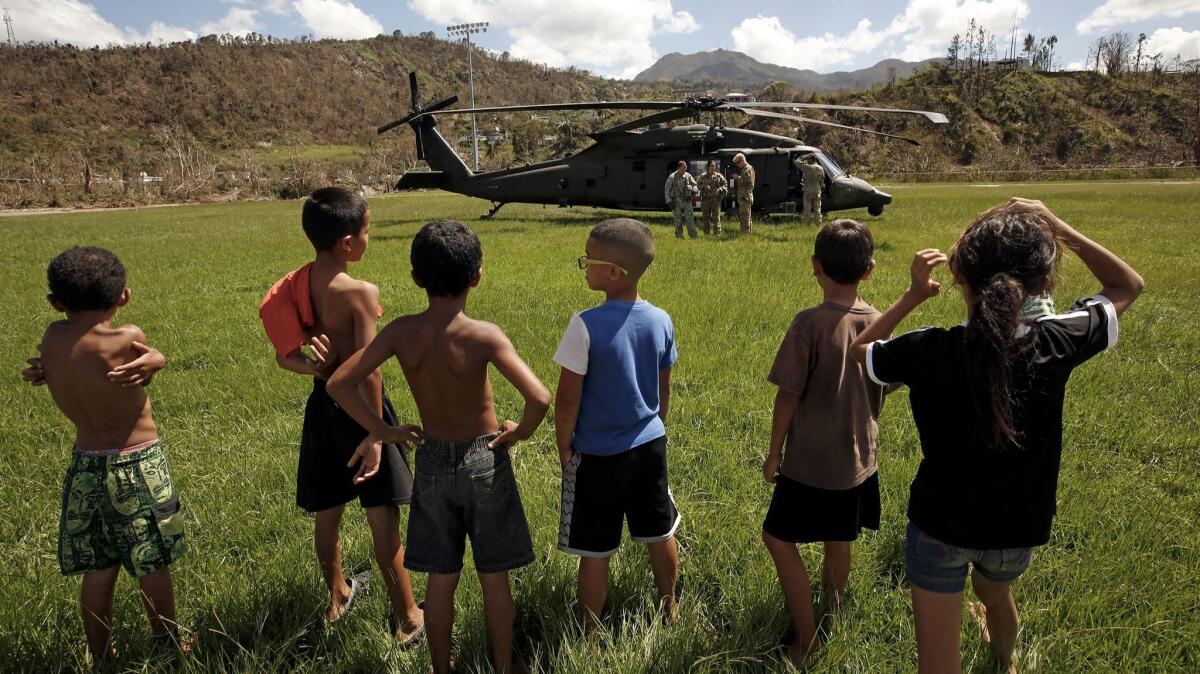
On Wednesday, the doctors took two U.S. Army helicopters to Jayuya, landing at the center of the town track, where stray horses roamed after the storm, to assess the hospital’s needs and deliver medications in scarce supply, such as insulin, ibuprofen and acetaminophen.
A crowd of about a hundred families ran out to meet them from a nearby apartment complex that’s home to about a thousand. After the storm, the running water turned white with a chemical taste that they said gave them headaches, stomachaches and nausea. Marta Viafania, 51, a janitor at the local high school, took two bottles of water for her three grandchildren, worried they might become sick from the local water.
This was the first time the doctors were able to fly into the mountains since the storm.
“Many of these towns are so blocked, you need a helicopter to get to them,” said Dr. Katia Lugo before consulting with staff at the 15-bed public Mario Canales Torresola Hospital.
They had another emergency: a patient with a severe head wound. Hilberto Torres Hernandez, 62, a retired mechanic, had been helping a neighbor repair her car after the storm, just as he had helped the mayor, when it fell and struck him.
Doctors couldn’t reach the Puerto Rico Medical Center in the capital to ensure it could receive Torres because the phones in Jayuya have been down since the storm. In some cases, staff have been transferring trauma patients to larger cities without knowing whether they can accept them. So far, none have been turned away.
The volunteer doctors were able to borrow a satellite phone, call the hospital in San Juan and ensure the man could be treated there.
“If they had not come, it might have been different. They might not have stabilized him,” said relative Jessica Torres, 41. “The mountains need more medical services.”
Other volunteers who arrived in Jayuya this week agreed.
There’s been a good system of healthcare here, but it’s basically collapsed. People have run out of prescriptions, doctors’ offices and hospitals have closed.
— Natasha Tobias, a registered nurse from Portland, Ore., who was volunteering at a hospital in Puerto Rico
“There’s been a good system of healthcare here, but it’s basically collapsed. People have run out of prescriptions; doctors’ offices and hospitals have closed,” said Natasha Tobias, a registered nurse from Portland, Ore., who was volunteering at the hospital through the Kansas City-based nonprofit Heart to Heart.
While the Jayuya hospital and others her group assisted in the mountain town of Barranquitas and south of San Juan in Caguas were still open, they were also seeing steady demand for care weeks after the storm.
“As the roads open, people are coming down and we’re seeing more trauma” from more remote mountain areas, she said.
“We’re all pretty worried this will turn into a bigger crisis as time goes on.”
Across town, diabetic mother of two Esha Garcia was running out of insulin.
Garcia, 33, said the medication was covered by Medicare, but the local pharmacy’s computers were not working since the storm and it wouldn’t refill her prescription. She uses four vials of insulin per month that cost $400 each and a $600 insulin pen each night. She had one vial and one pen left Wednesday.
“If I don’t get the medication I need, I’ll have to go to the hospital,” she said.
On Friday, the U.S. Department of Health and Human Services activated its emergency drug assistance program in Puerto Rico that covers the cost of prescriptions, medical supplies, equipment and vaccines after a disaster. It wasn’t clear how soon that could help people such as Garcia in the island’s interior.
Jayuya’s hospital, with its staff of five doctors and nine nurses, saw 78 more patients the week after the storm, 310 total, according to emergency room administrator Joanna Morales. So far, they have only had one patient die since the hurricane, a man struck by a landslide. But their treatment had been limited, she said. They were running low on diesel for their generator. Without an additional generator, they couldn’t operate respirators or portable chest X-rays. And they needed to resupply basic medications and equipment, including oxygen tanks and insulin.
“Every day we see patients who come in without oxygen and we have to admit them,” said Dr. Lourdes Rodriguez, who traveled north from Ponce to volunteer at the hospital after the storm.
The Puerto Rico National Guard had promised to come set up a temporary hospital outside with a team of 10 doctors, but had yet to arrive, she said.
The volunteer doctors had to leave after about an hour, bound for several other mountain towns, including Lares, Morovis and Orocovis. U.S. Army Rangers would return the following day with a generator and other requested supplies, they said.
“The focus today was the most isolated areas,” said former U.S. Surgeon General Antonia Novello, who was traveling with the group wearing a T-shirt that said, in Spanish, “Puerto Rican to my feet.”
Novello was working on a vaccination campaign set to launch Friday across the island to protect against mosquito-borne diseases. She also hoped to distribute donated treatment kits for the same illnesses.
After about an hour, the team returned to the helicopters, unloaded several boxes of much needed medicine for the hospital, distributed food and water to a waiting crowd of families and prepared to take off.
“We don’t waste time,” Novello said. “We can’t.”
To read the article in Spanish, click here
Twitter: @mollyhf
UPDATES:
4:04 p.m.: This article was updated to include Vice President Pence’s visit to Puerto Rico.
This article was originally published at 1:10 p.m.
More to Read
Sign up for Essential California
The most important California stories and recommendations in your inbox every morning.
You may occasionally receive promotional content from the Los Angeles Times.

